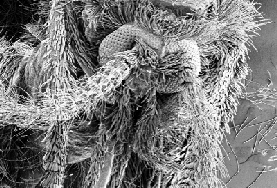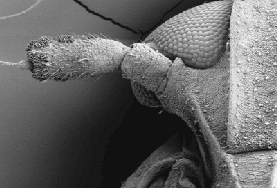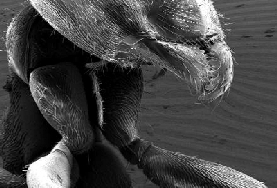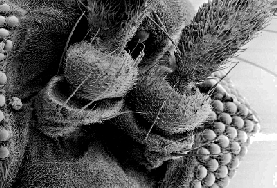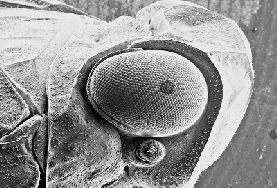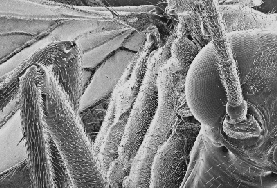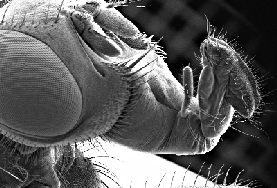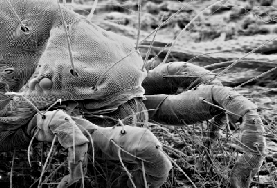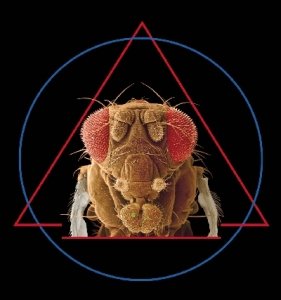|
THE SPATIAL-SOUND LIGHT-SPACE MICROCOSMOS
WORLD OF NATURE AND ANIMAL WORLD
“At the center of the micro-sound-LED-light-art of the Studio <SA/JO> is the perception of “resounding-shining” nature, the fantastical world that is hidden within animal voices’ and light’s sound, color, and space microcosms.
The media artist gathers her artistic-acoustic-visual base material exclusively from the animal world and nature and with it, create a spatial-sound-color-light-art that heralds, among other things, the “origins” of sound on earth. Visitors listen in the light and color flooded “event spheres” of the artificial staged “spatial-sound-microscopics” and in this way, in the broadest sense, also become involved with nature, per se. …“ more
|
|
|
Prof. Dr. h.c. Peter Weibel, 2009
Curator, Artist, Media theorist and CEO of ZKM Karlsruhe
“… Krebs and Schäfer are the Hookes [Robert Hooke, 1635-1702] of sound-light art … Classical aesthetics as both a theory of perception and a theory of arts has practically limited itself to the description of surfaces, of what we see with our eyes, what we hear with our ears. However, in the meantime, we have invented instruments, devices, a technology that penetrate deep under these surfaces we can acknowledge with our own sense organs.
And the artist couple Schäfer and Krebs has actually succeeded in saving and isolating just these aesthetical moments. They offer acoustic microscopes which enable us to perceive new sound worlds as well as new image worlds. …“ more |
|
|
Julia Gerlach, 2009
Musicologist, journalist, cultural manager
„…With this project, the artist duo <SA/JO>, long known in the field of sound art, have for the first time combined their microscopic space-sound work with a light technology which offers an analogous potential for detailed modification: square-shaped LED panels are suspended from the ceiling, describing a semi-circle. The distances between the panels increase towards both ends mirroring the likewise increasing resolution of the visual field at the eyes’ edges. In the centre, several panels melting into one bigger surface represent the focus of the visual field. The coarse grating, i.e. the pixel matrix of the LED panels normally used for advertising or large-scale projections allow the artist couple to transfer the microscopic approach they have refined in the auditive field in the course of more than ten years, to the visual level. In addition, the LED elements constitute a horizontal level evoking a feeling of width and space; simultaneously, the narrowness of the band offers further abstraction of the concrete image, complementary to microscopy. ….“ more
|
|
|
Daniel S. Margulies, 2009
Neuroscientist, artist and member of the „Association of Neuroesthetics“
“…I know that Sabine Schäfer and Joachim Krebs are fond of Paul Klee’s statement that art does not reproduce the visible but makes visible, and this is a sentiment that could easily be applied to science as well. So that their procedure of space-sono-microscopy renders a valuable service to make that audible this is previously non-audible, but already existing. The process of what they term molecularization coming from Deleuze to go in and try to pull out the elements, the foundational elements of sound, to desubjectivize sound, but at the same time not to draw a final abstraction or theory, as they say the concrete content matter is increasingly dissolved and transformed into an abstract expression matter.…“ more
|
|
|
Dr. Hanno Ehrler, 2007
Radio producer and freelance journalist (musicology, art history, ethnology)
“…Thus, natural sounds such as they are understood by the artist-couple originate far beyond musical traditions so that they distinguish themselves fundamentally from the common „musical“ – instrumental or electronical – sounds produced by humans. They are untouched by the musical traditions or music-historical categories that affect all other sound material. Sabine Schäfer and Joachim Krebs claim that natural sounds possess a „universal character transcending all political and cultural limitations. …“more
|
|
|
<SA/JO>, 2006
Essay „Deleuze and the Sampler as an Audio-Microscope“
“… “The actual musical content of this music is steeped in ways of becoming woman, becoming child and becoming animal, but throughout any possible influences which also depend on the instruments, it increasingly tends to become molecular, in a kind of cosmic murmur that makes the inaudible audible and the imperceptible perceptible as such: no longer the songbird, but instead the molecule of sound.” (G.Deleuze / F.Guattari: “Mille Plateaus“, 1980) …“
more |
|
|
Dr. Annette Hünnekens, 2005
Media art scientist, freelance journalist
“…Magnification enables audibility of the pure sound processes, quasi a trip through the fractal sound structure and its endless structural similarities. … As the timbres sound exotic and familiar at the same time, we take them for universal sounds to be equally „understood“ everywhere in the world. Consequently, they are transverbal and transcultural at the same time. … It is above all sound microscopy, relevant magnification of sound, which grants higher „objectivity“. Consequently, the sounds gradually leave the semantic level, changing into strongly imaginative impulses for subjective fantasies. …“
more
|
|
|
Dr. John Dack, 2004
Musicologist, Middlesex University London
“…During an important phase of the work's production in which found sound material is examined, the digital sampler is used to investigate the inner structure of sounds (a process called EndoSonoScopy by the artist-couple) in order to make audible the inner (sound) structure with its microscopic details. The vocabulary developed in this way promotes a number of subtle discourses as the sound transitions of the Space-soundInstallations interact with the visitors' inner psychological spaces. Events and memories are evoked ranging from the known to the unknowable. …“ more
|
|
|
Sound examples of "TopoSonic Spheres"
Artist catalogue “TopoSonic Arts“
Ed. Kehrer Heidelberg, 2007
Documentation of the artist-couple's works from 1997 to 2006
containing fundamental texts on aesthetics and philosophy
The supplement CD contains a portrait on the artist duo produced by the music journalist Dr Hanno Ehrler and broadcasted by "Deutschlandfunk" in August 2007
more
<SA/JO> - publications, current exhibitions, archives |
|
|
